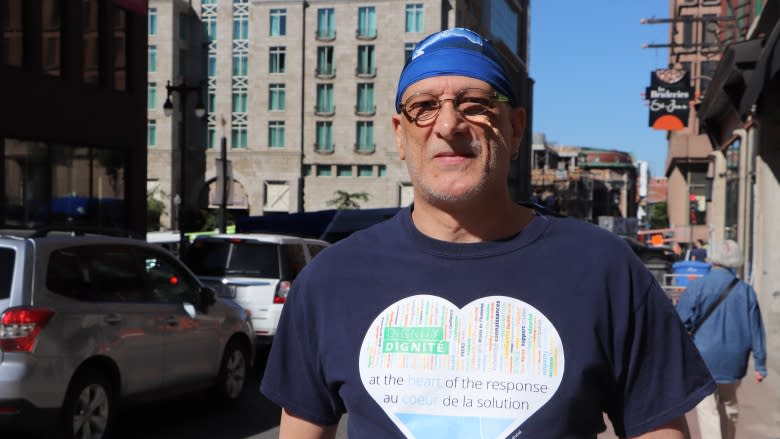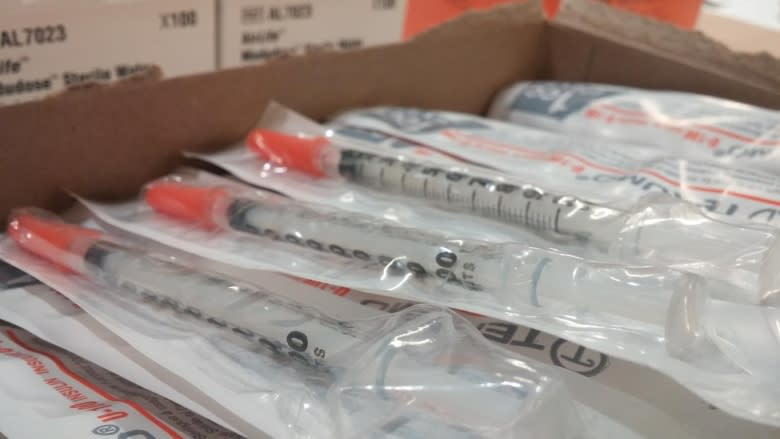Advocates welcome announcement for permanent safe injection site in Quebec City
Advocates who have worked toward establishing a supervised injection site (SIS) for drug users in Quebec City are relieved there are only a few more hurdles to climb before the project becomes reality.
The regional health authority, the Centre intégré universitaire de santé et de services sociaux de la Capitale-Nationale, (CIUSSS), announced on Thursday it has chosen a location in the Saint-Roch neighbourhood, under the Dufferin-Montmorency viaduct, to set up the service.
"We are so very thankful," said Pierre Frappier, who has fought for the implementation of a SIS in Quebec City for more than seven years.
Frappier speaks on behalf of users in the joint committee formed by the CIUSSS and local community organizations.
He said the location, slightly set back from the main streets in a low-traffic area, will be convenient for users who mostly hang out in downtown Saint-Roch.
"They don't want to be judged," he said, commending the discreet location, which he expects business owners will be more likely to accept.
Officials say a temporary SIS could be up and running by 2019, and the permanent building ready for 2020.
Frappier said he's aware there are still many concerns from merchants and citizens that need to be addressed.
"People who haven't been informed properly, who have fears it could generate uprising in crime, uprising in drug use, violence in the street, but that won't be the case," Frappier said.
With an alarming number of overdoses linked to carfentanil and fentanyl laced drugs, Frappier said the resource is needed now more than ever.
"If we save just one life, it will have been worth it," he said.
'Important step'
The organization Points de Repères, which will be responsible for the SIS, already has a needle-exchange program and regularly does rounds to pick up discarded syringes in public spaces.
It also provides addiction treatment and psychological support for users, as well as testing for intravenous transmitted diseases.
General manager Mario Gagnon said the project has been on the table since 2011, and his team is looking forward to seeing it come to fruition.
"This is a super important step, we see it is coming and we are really happy," said Gagnon.
He hopes to speak with concerned citizens and get their input on how to make the project socially acceptable, a required element to get approval for Health Canada before the official opening.
Marc De Koninck, the community services officer with the CIUSSS, said those questions are legitimate, and will be answered during public meetings over the summer, the first one scheduled for July 3.
"The population doesn't always fully understand what's at stake," De Koninck said.
The public meetings will be a place where citizens can make suggestions on how the site will be administered, since they are still certain elements that have yet to be defined, De Koninck said.
The location, however, is not set to change and was chosen over a mobile unit, an idea floated by business owners in the past.
"Experience shows mobile units don't create a stable relationship with users," said De Koninck.
Public health issue
The director of public health, François Desbiens, said choosing a socially acceptable location that would meet users' needs was one of the most significant decisions in the implementation of a SIS.
"You have to be present in the community," he said, adding that he is preoccupied by the health issues affecting drug users.
According to data collected by the CIUSSS, one in five drug users share their needles and one in four had injected in public in the six months preceding the survey.
Desbiens said two out of three users are infected with Hepatitis B, while 10 per cent are HIV positive.
All these statistics, and years of collaboration with community groups have convinced him that the service is "indispensable" and will be an added welcome for the services already being dispensed to drug addicts.



